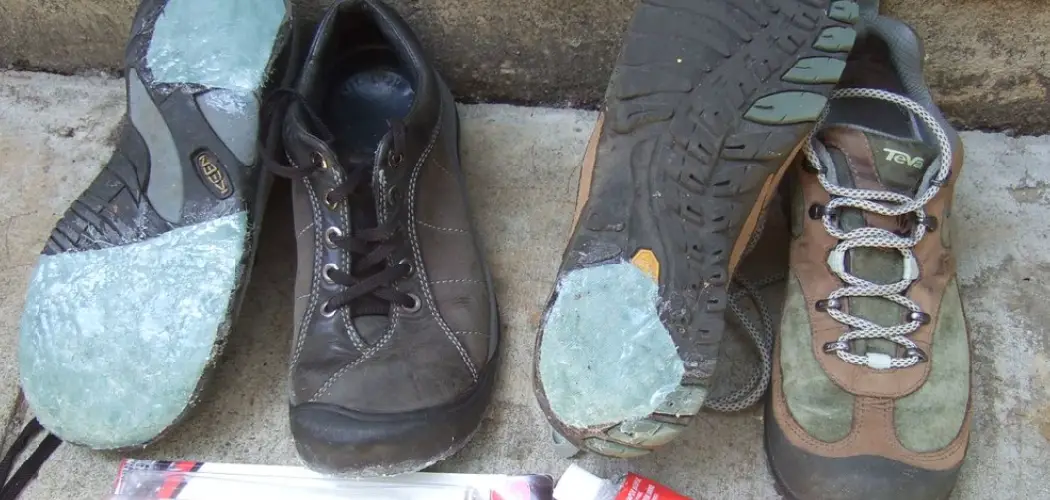Leather shoes are not only a fashion statement but also an investment in quality footwear. However, exposing them to rain can lead to water damage, discoloration, and deterioration of the leather. Protecting leather shoes from rain is essential to preserve their appearance and extend their lifespan.
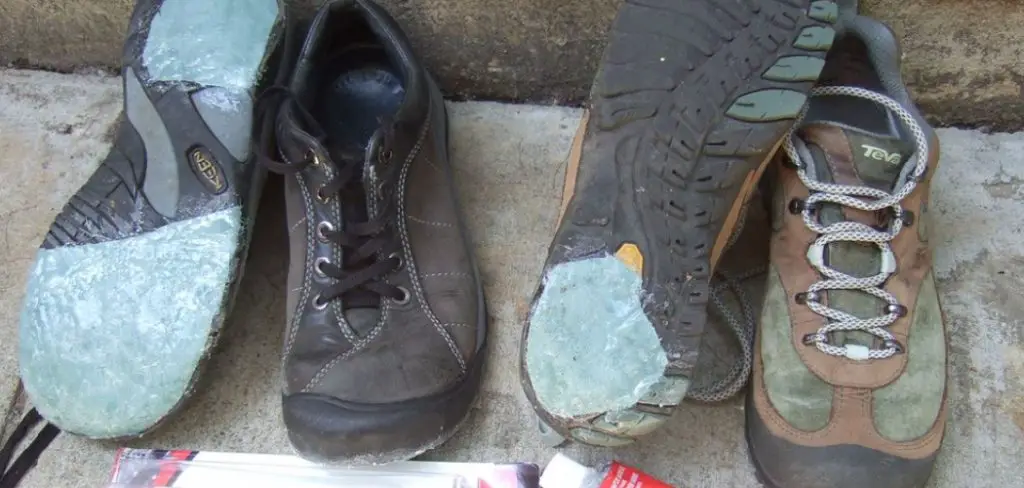
Fortunately, there are several effective methods and products available to shield leather shoes from moisture and ensure they remain looking their best, rain or shine. In this article, we’ll explore practical tips and techniques for how to protect leather shoes from rain. From waterproofing sprays and conditioners to proper storage and maintenance routines, we’ll cover everything you need to know to keep your leather shoes protected and looking pristine, even on the wettest days.
Importance of Protecting Leather Shoes
Protecting leather shoes from rain and moisture isn’t just about maintaining their aesthetic appeal; it’s crucial for preserving the integrity and longevity of the material. Leather, being a natural and porous material, is susceptible to water damage. When leather shoes absorb water, it can lead to severe consequences such as stiffening, cracking, and even mold growth.
Water exposure not only alters the color and texture of the leather but also compromises its strength and durability. By taking proactive measures to safeguard leather shoes against wet conditions, you ensure they retain their shape, comfort, and beautiful finish for years to come. Consequently, protecting your leather shoes from rain is an investment in their longevity, allowing them to serve as a reliable and stylish part of your wardrobe for a significant amount of time.
Understanding the Risks of Rain Damage
The damage rain inflicts on leather shoes goes beyond mere surface-level aesthetic concerns; it penetrates deep, affecting the foundation and functionality of the footwear. When leather gets wet, it swells as it absorbs water, causing a distortion in its natural fibres. Upon drying, these fibres can become stiff and lose their flexibility, leading to an increased risk of cracking.
This structural damage not only diminishes the shoe’s comfort and fit but can also make it susceptible to faster deterioration. Furthermore, persistent moisture can encourage the growth of mold and mildew, which not only produces an unpleasant odor but can also permanently mar the leather’s finish.
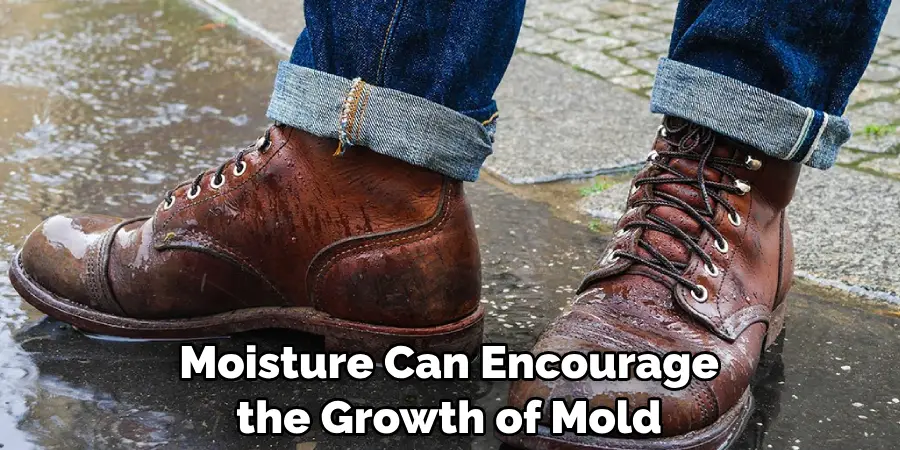
Even more worrying is the potential for water to wash away essential oils and conditioners within the leather, leaving it dry and brittle. Understanding these risks is crucial for anyone looking to maintain their leather shoes in optimal condition, highlighting the importance of adopting preventive measures against rain damage.
Common Issues Caused by Rain
Rain exposure can lead to several common issues in leather shoes, significantly affecting their quality and appearance. Among these issues, water spots and stains are the most visible. These occur when raindrops are absorbed into the leather, leaving behind marks that can be difficult to remove.
Additionally, rain can cause the leather to become overly saturated, leading to a loss of the shoe’s original shape and an uncomfortable fit. This saturation can also soften the leather to the point where it becomes susceptible to scratches and scuffs, which are more noticeable and damaging on the wet surface.
Over time, repeated exposure to rain without proper care can accelerate the aging process of leather shoes, making them look worn out and faded much sooner than they should. Understanding these common issues underscores the necessity of taking steps to protect leather shoes from the effects of rain, ensuring their longevity and maintaining their visual appeal.
Impact of Moisture on Leather’s Durability and Quality
Moisture’s impact on leather’s durability and quality cannot be overstated. When leather is exposed to moisture, it undergoes a fundamental alteration that affects both its appearance and structural integrity. The absorption of water can cause the leather’s fibers to swell and stretch, altering the material’s natural texture and leading to potential deformation.
This swelling is temporary; however, the real damage occurs as the leather dries. Without the natural oils that moisture displaces, leather becomes dry, brittle, and much more prone to cracking. These cracks not only mar the leather’s surface but also weaken its overall structure, significantly reducing the item’s lifespan.
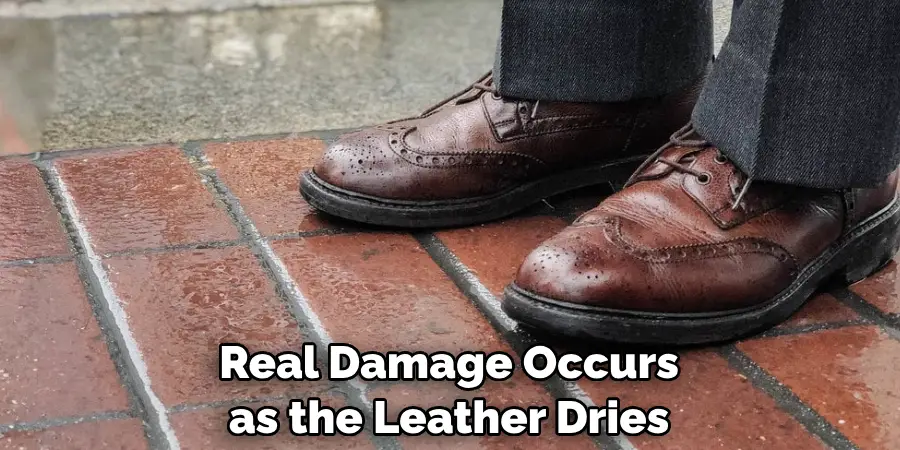
Additionally, repeated cycles of wetting and drying can exacerbate these effects, accelerating the deterioration of the leather. Thus, moisture notably compromises both the durability and quality of leather goods, emphasizing the importance of preventive care and maintenance.
Leather Shoe Construction and Materials
Understanding the construction and materials of leather shoes is pivotal for recognizing why they require such careful protection against rain and moisture. The majority of high-quality leather shoes are crafted using full-grain or top-grain leather.
Full-grain leather, known for its durability and breathability, retains the natural texture of the hide, including any marks or imperfections, which many consider adding character to the footwear. Top-grain leather, on the other hand, is slightly thinner and has had the very top layer removed to create a more uniform appearance but is still quite durable.
The construction of leather shoes often involves stitching together several pieces of leather, using a variety of techniques that affect the shoe’s flexibility, durability, and how well it can be waterproofed. For instance, Goodyear welt construction is prized for its longevity and the ease with which the shoe can be resolved, making it an excellent investment for leather footwear enthusiasts.
Additionally, the sole material plays a critical role in protecting against moisture; rubber soles offer better resistance to water than leather soles, though they may not always match the aesthetic or breathability desired in a fine leather shoe.
Components like insoles and linings are typically made from softer leathers to offer comfort and absorb perspiration, contributing to the shoe’s interior microclimate. These elements are crucial but can become breeding grounds for bacteria and mold if the shoe is not allowed to dry properly after becoming wet.
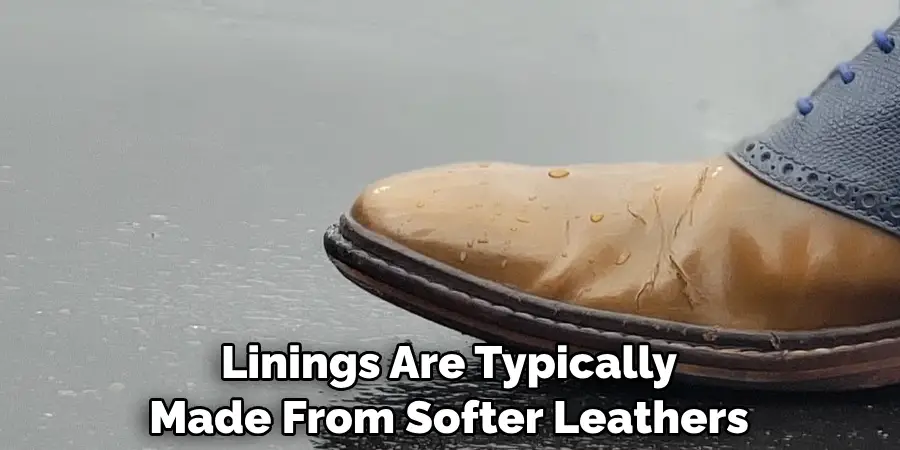
By appreciating the intricate construction and sensitive materials of leather shoes, one can understand the necessity of adopting preventive measures against rain and moisture to preserve the shoes’ structure, comfort, and aesthetic value over time.
Types of Sprays Available and How They Work
To combat the adverse effects of rain on leather shoes, various sprays have been designed not only to repel water but also to maintain the quality of the leather. These sprays can be broadly categorized into waterproofing sprays, conditioner sprays, and combination sprays that offer both protective and nurturing benefits.
Waterproofing Sprays
Waterproofing sprays work by creating an invisible shield on the surface of the leather, preventing water from penetrating the material. This is achieved through the use of silicones or fluoropolymers, which effectively repel water and other liquids. By applying a waterproofing spray, the leather becomes more resistant to rain, spills, and stains, thus maintaining its pristine condition and avoiding water damage.
Conditioner Sprays
Conditioner sprays serve a dual purpose of protecting leather shoes from moisture while nourishing the leather. These sprays contain essential oils and other conditioning agents that penetrate the leather, replenishing the natural oils lost through exposure to the elements. This helps to keep the leather soft, supple, and resistant to cracking, thereby extending its lifespan.
Combination Sprays
For ultimate protection and care, combination sprays offer the benefits of both waterproofing and conditioning in a single product. These sprays provide a protective barrier against water while simultaneously conditioning the leather with vital oils and nutrients. This ensures that the leather remains waterproof, flexible, and in excellent condition, even with regular exposure to rain.
Applying these sprays is simple and effective. Clean the shoes thoroughly before spraying them evenly at a distance, allowing the spray to create a uniform layer over the leather. Once applied, the shoes should be left to dry naturally in a well-ventilated area. Regular reapplication of these sprays is recommended to maintain optimal protection against rain and moisture.
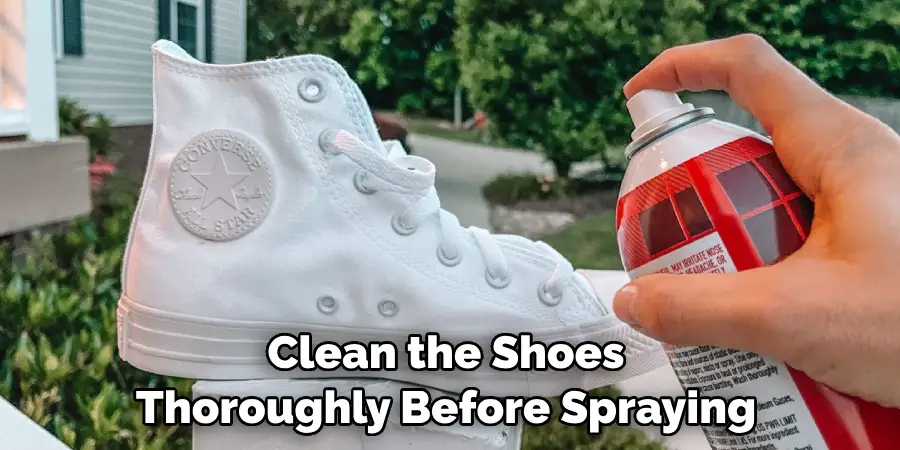
10 Methods How to Protect Leather Shoes from Rain
1. Apply Waterproofing Sprays
One of the most common and effective methods to protect leather shoes from rain is by applying waterproofing sprays. These sprays create a barrier on the surface of the leather, preventing water from penetrating and causing damage. Before applying the spray, ensure that your shoes are clean and dry.
Hold the spray canister about 6 inches away from the shoes and apply an even layer of the waterproofing spray, covering the entire surface. Allow the shoes to dry completely before wearing them. Reapply the waterproofing spray periodically, especially after cleaning or when you notice water no longer beads on the surface.
2. Use Beeswax or Silicone-Based Products
Beeswax or silicone-based products can provide an additional layer of protection for leather shoes against rain and moisture. These products create a waterproof barrier while also nourishing and conditioning the leather.
To apply, simply rub the beeswax or silicone-based product onto the surface of the shoes using a clean cloth or sponge. Pay special attention to seams, stitching, and areas prone to water penetration. Allow the product to penetrate and dry thoroughly before wearing the shoes. Reapply as needed, particularly after exposure to rain or when the leather starts to lose its water-repellent properties.
3. Condition the Leather Regularly
Proper conditioning is essential for maintaining the integrity and water resistance of leather shoes. Conditioning products help keep the leather supple, moisturized, and less susceptible to water damage. Choose a high-quality leather conditioner that is specifically formulated for the type of leather used in your shoes.
Apply the conditioner generously to clean, dry shoes using a clean cloth or applicator brush. Work the conditioner into the leather in circular motions, paying attention to creases, folds, and areas of wear. Allow the conditioner to absorb and penetrate the leather, then buff off any excess with a clean cloth. Regular conditioning helps preserve the natural oils in the leather and keeps it hydrated and protected from rain and moisture.
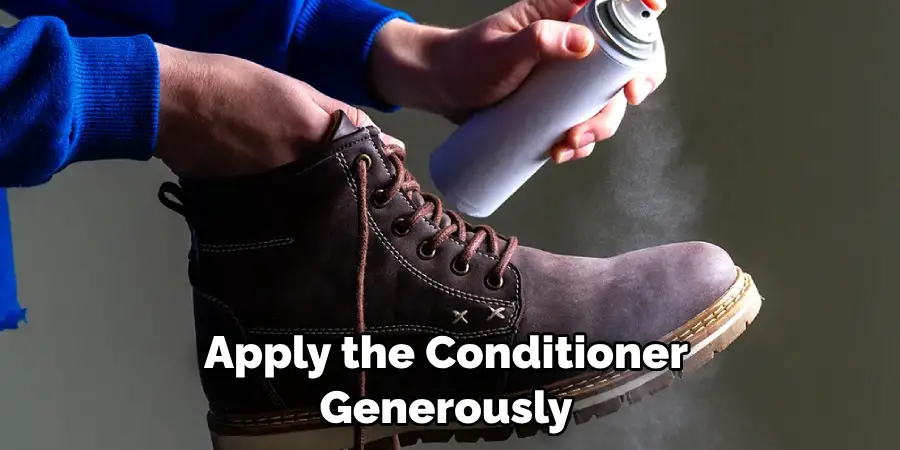
4. Invest in Quality Shoe Covers or Overshoes
Shoe covers or overshoes are another effective way to protect leather shoes from rain and moisture. These protective covers slip over your shoes and provide an additional layer of waterproofing while also shielding them from dirt and debris. Look for shoe covers made from durable, waterproof materials like rubber or PVC.
Choose a size that fits snugly over your shoes without being too tight or restrictive. Keep a pair of shoe covers handy in your bag or car for unexpected rainy days, or use them regularly during wet weather to preserve the condition of your leather shoes.
5. Avoid Puddles and Standing Water
While it may seem obvious, avoiding puddles and standing water is one of the best ways to protect leather shoes from rain damage. Prolonged exposure to water can saturate the leather, causing it to become waterlogged, discolored, and weakened over time. When walking in rainy conditions, try to stick to dry pathways and avoid stepping in puddles whenever possible.
Use umbrellas or find shelter to minimize exposure to rain, especially during heavy downpours. If you do accidentally step in water, wipe off excess moisture with a clean cloth as soon as possible and allow the shoes to air dry naturally in a well-ventilated area.
6. Store Shoes Properly When Not in Use
Proper storage is key to maintaining the condition of leather shoes and protecting them from rain and moisture when not in use. Store your shoes in a cool, dry place away from direct sunlight and heat sources, as excessive heat can cause the leather to dry out and crack. Use shoe trees or inserts to help maintain the shape of the shoes and absorb excess moisture.
Consider storing shoes in breathable shoe bags or boxes to protect them from dust, dirt, and moisture in the air. Rotate your shoes regularly to allow them to air out and prevent moisture buildup, especially during humid weather conditions.
7. Clean Shoes Promptly After Exposure to Rain
If your leather shoes do get wet in the rain, it’s essential to clean them promptly to prevent water damage and mold growth. Use a clean, damp cloth to gently wipe away any dirt, mud, or debris from the surface of the shoes.
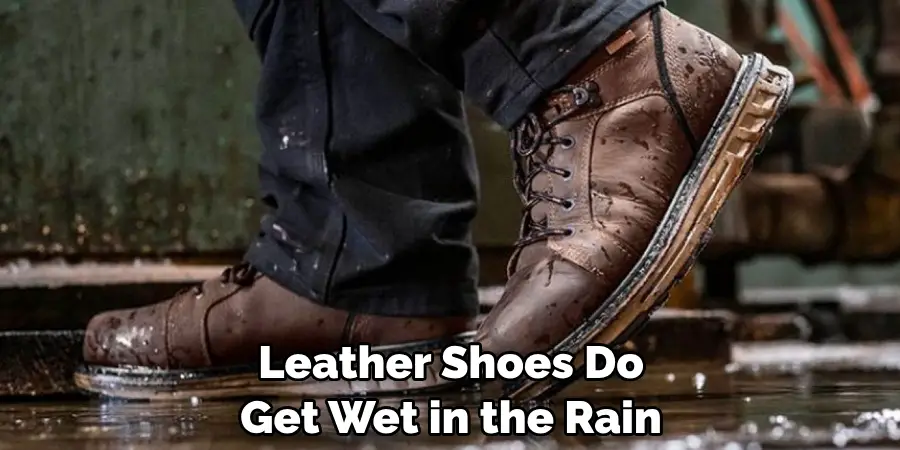
Avoid using soap or detergent, as these can strip away natural oils and damage the leather. Stuff the shoes with crumpled paper towels or a clean cloth to help absorb moisture and maintain their shape as they dry. Allow the shoes to air dry naturally in a well-ventilated area, away from direct heat or sunlight, to prevent cracking or warping of the leather.
8. Invest in Leather Protectant Products
Leather protectant products are specially formulated to repel water and protect leather shoes from rain and moisture. These products typically come in the form of creams, sprays, or waxes and create a protective barrier on the surface of the leather. Apply the leather protectant according to the manufacturer’s instructions, ensuring complete coverage of the entire shoe surface.
Allow the product to dry completely before wearing the shoes. Reapply the leather protectant regularly, especially before exposing the shoes to rainy or wet conditions. Choose a product that is compatible with the type of leather used in your shoes for optimal results.
9. Dry Shoes Properly After Exposure to Rain
If your leather shoes do get wet in the rain, it’s essential to dry them properly to prevent damage and maintain their condition. Remove any excess moisture from the surface of the shoes using a clean, dry cloth. Stuff the shoes with crumpled paper towels or a clean cloth to help absorb moisture and maintain their shape as they dry.
Avoid using heat sources like hairdryers or radiators, as excessive heat can cause the leather to dry out and crack. Instead, allow the shoes to air dry naturally in a well-ventilated area, away from direct sunlight or heat sources. Once dry, apply a leather conditioner to replenish moisture and restore suppleness to the leather.
10. Repair and Maintain Shoes Regularly
Regular maintenance and repairs are essential for prolonging the lifespan of leather shoes and protecting them from rain and moisture damage. Inspect your shoes regularly for signs of wear, damage, or deterioration, such as scuffs, scratches, or loose stitching.
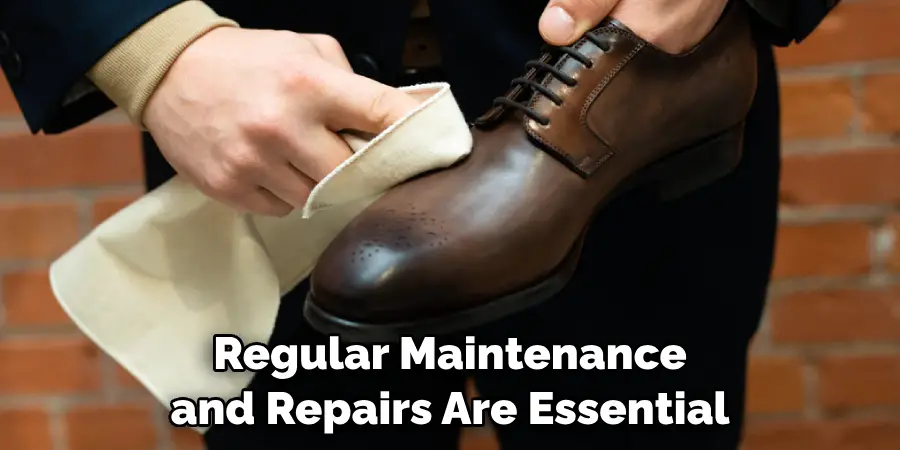
Repair any minor issues promptly to prevent them from worsening over time. Consider professional shoe repair services for more extensive repairs or restoration work. Additionally, maintain a regular cleaning and conditioning routine to keep your leather shoes in optimal condition and ensure they remain protected from rain and moisture for years
Conclusion
Proper care and maintenance are crucial for extending the lifespan of leather shoes and ensuring they remain in prime condition despite exposure to rain and moisture. By following the outlined tips—such as keeping them clean, dry, well-conditioned, and properly stored—you can significantly reduce the risk of water damage and maintain the aesthetic and structural integrity of your leather footwear.
Remember, investing time in the care of your leather shoes not only preserves their quality and function but also reflects personal pride and respect for your belongings. Thanks for reading, and we hope this has given you some inspiration on how to protect leather shoes from rain!

